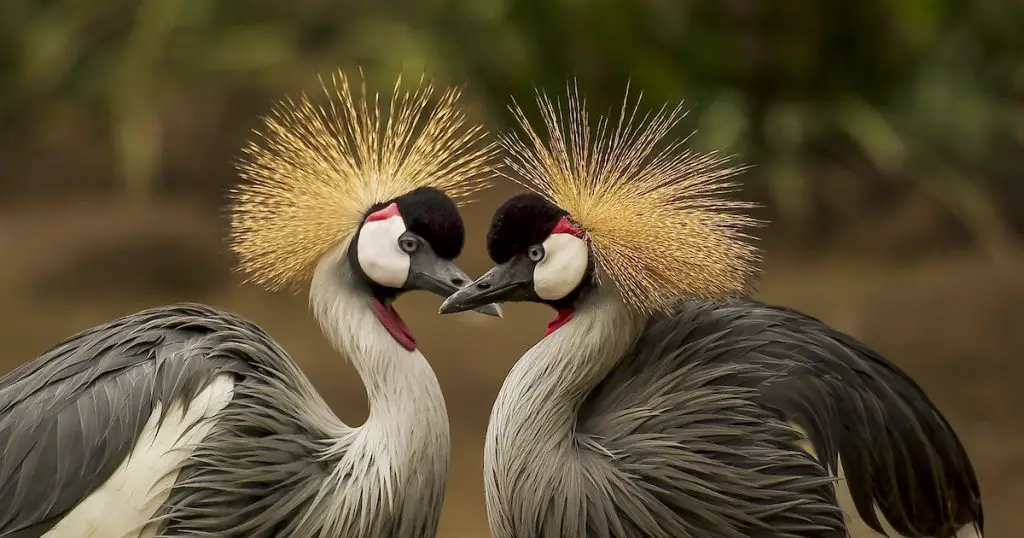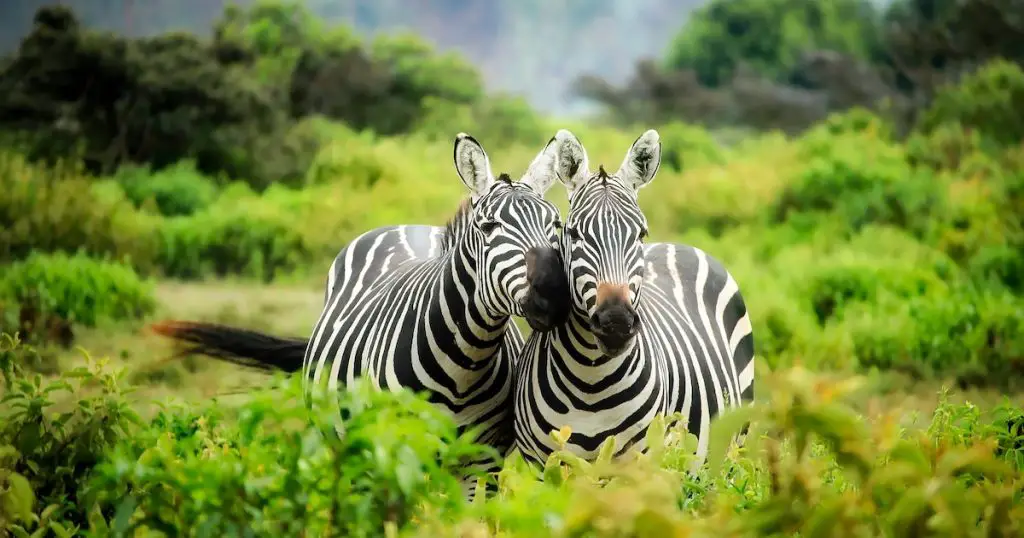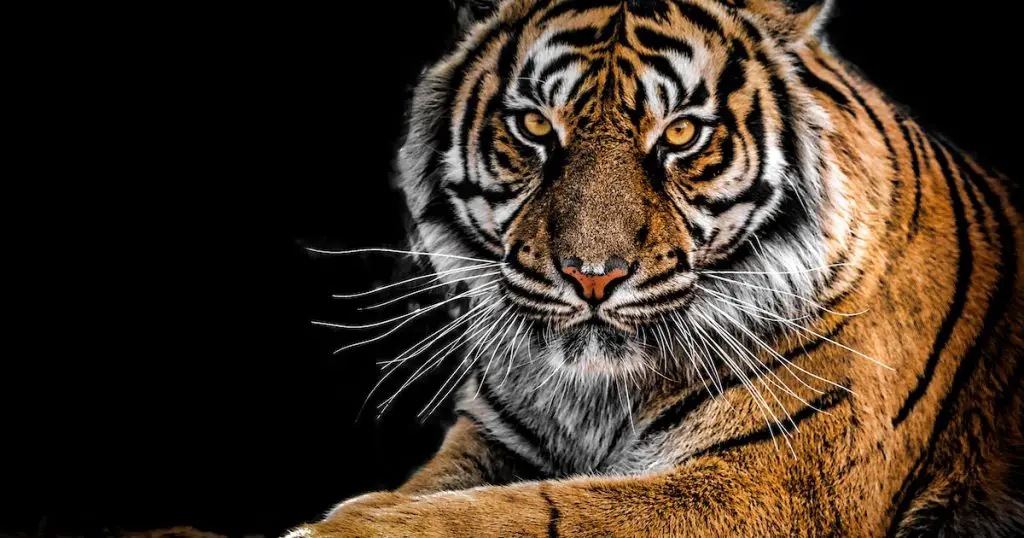Prescott, a picturesque city nestled in the heart of Arizona, boasts a diverse climate that has been pivotal in shaping its rich wildlife. This region’s unique geographical characteristics paired with the influence of its climate have birthed a plethora of fauna, each adapted ingeniously to their habitats.

The impact of Prescott’s climate on local wildlife is an intricate tapestry of adaptability, survival, and symbiosis. In this article, we unravel this tapestry, understanding how the changing climate patterns interact with the rich biodiversity of the region.
A Brief Overview of Prescott’s Geography and Climate
Situated at an altitude of 5,400 feet, Prescott offers a combination of mild winters and moderate summers, which are interspersed with monsoon rains. Such climatic variations make it a hub for diverse habitats, ranging from pine forests to expansive grasslands.
The unique positioning between desert lowlands and mountain highlands means that the city experiences a confluence of varying weather patterns.
Prescott’s climate has not only shaped its natural landscapes but also determined the wildlife that calls this place home. Animals and plants, over millennia, have adapted to the distinct seasons, making the most of what each time of year has to offer.
Historical Climate Trends of Prescott
Prescott’s climate, like many parts of the world, has seen significant shifts over time. Historically, the region was cooler, with dense forests covering vast expanses. But as time progressed, natural events coupled with anthropogenic activities have caused subtle changes.
Recent studies have shown that the temperatures in Prescott are gradually increasing, leading to prolonged summer months and shortened winter spells. Such shifts affect the life cycles of various organisms, from the smallest insects to large mammals.
The Pre-Industrial Climate of Prescott
Before the onset of the industrial age, Prescott was largely untouched by human interventions. The climate was predominantly temperate, with regular rainfall patterns ensuring that the region’s flora and fauna thrived. Wetlands were aplenty, providing essential habitats for various species.
Over time, these natural landscapes underwent transformations, sometimes due to natural climate cycles and often due to human activities. The onset of the industrial age brought with it a series of changes, many of which were irreversible.
Recent Climatic Changes and Trends
The past few decades have witnessed more frequent droughts, reduced snowfall, and increased temperatures. As a result, Prescott’s wildlife has been undergoing adaptive changes, either shifting habitats, altering behavior, or, in unfortunate cases, facing extinction.
Research from the University of Arizona indicates that the average annual temperature has risen by approximately 2°F in the past century. Such seemingly small changes can cause a domino effect on local ecosystems, leading to shifts in animal populations and behaviors.
Major Wildlife Habitats Affected by Climate
Climate change has significantly impacted major wildlife habitats, inducing a cascade of disruptions in ecosystems worldwide. From melting polar ice caps threatening the existence of polar bears and seals to drying wetlands making survival precarious for amphibians and migratory birds, the alterations are evident.

Coral reefs, often referred to as the “rainforests of the sea,” suffer from bleaching due to rising sea temperatures, affecting a plethora of marine species. Additionally, temperate forests witness shifts in species compositions as both flora and fauna try to migrate to suitable climates.
In essence, the intricate balance of these habitats is at risk, emphasizing the urgency for proactive conservation measures.
The Pine Forests: A Cool Retreat
Prescott’s pine forests are home to a myriad of species, from the elusive bobcat to the melodious western bluebird. These forests provide cool temperatures and shelter during the scorching summer months.
However, with rising temperatures, the moisture content in the soil is decreasing, leading to stressed trees and forest fires. As the forests thin out, animals are forced to relocate, searching for cooler habitats.
Prescott’s pines, especially the Ponderosa pines, serve as a refuge for various birds and mammals. The dense canopy provides shade, while the undergrowth offers a rich source of food. However, the changing climate threatens these very essentials, leading to reduced reproduction rates and increased mortality.
The Grasslands: A Region of Transition
Grasslands, which bridge the gap between the forested areas and the desert plains, are essential for many migrating species. They provide a temporary home, especially during the breeding season. But with shifting rain patterns, these grasslands are either becoming too parched or too flooded, making them inhospitable.
Birds like the grasshopper sparrow and mammals like the pronghorn antelope heavily rely on these transitional zones. With grasslands undergoing transformations, the survival of these species hangs in the balance.
Wetlands and Water Sources: Life’s Oasis
Historically, Prescott was dotted with numerous wetlands, providing essential water sources to its inhabitants. From amphibians to waterfowls, wetlands have always been bustling with life. However, the recent drop in rainfall and increasing temperatures are causing many of these wetlands to dry up.
The ripple effect of this change is enormous, impacting not just the aquatic life but also the terrestrial species that rely on these water bodies.
For example, species like the Prescott Spadefoot Toad rely on temporary rain pools for breeding. With erratic rain patterns, their breeding cycles are disrupted, leading to population declines.
Animal Adaptations to Prescott’s Climate
In response to the unique climatic conditions of Prescott, numerous animals have evolved distinct adaptations. The Prescott Kangaroo Rat, for instance, thrives in desert conditions with specialized kidneys that help conserve water and long hind legs tailored for nocturnal foraging.
Meanwhile, the Northern Goshawk, ruling the pine forests, exhibits agile flight patterns optimized for navigating dense canopies. Additionally, the Prescott Spadefoot Toad demonstrates remarkable resilience, aestivating during arid spells and reproducing rapidly during the rainy season.
These species, among others, exemplify the intricate dance of evolution and adaptation in the face of Prescott’s diverse climate.
Physiological Adaptations
Many animals in Prescott have developed unique physiological features to cope with the climate. For instance:
- Kangaroo rats have evolved specialized kidneys that allow them to excrete concentrated urine, minimizing water loss.
- Prescott’s spadefoot toads can burrow deep into the ground, staying dormant during dry spells and emerging only when conditions are favorable.
- Birds like the Gila woodpecker have a higher body temperature, allowing them to forage during the hotter parts of the day without overheating.
Behavioral Adaptations
Apart from physiological changes, animals have also altered their behaviors to cope. Many nocturnal animals, for instance, have become crepuscular to avoid the scorching daytime temperatures.
Migration patterns have shifted, with birds arriving either earlier or later based on food availability and nesting conditions.
Climate-Driven Challenges for Wildlife
Climate-driven challenges are mounting for wildlife across the globe. Fluctuations in temperatures and unpredictable precipitation patterns disrupt traditional migratory routes, feeding habits, and breeding cycles. Such disturbances can result in a scarcity of essential resources like food and water, further exacerbating competition among species.

For some animals, especially those adapted to specific habitats, the rapid pace of climate change leaves insufficient time for evolutionary adaptation, pushing them to the brink of extinction. Additionally, the proliferation of invasive species, advantaged by the altered climatic conditions, further threatens native species, adding to the intricate web of challenges that wildlife now grapple with.
Shrinking Habitats and Fragmentation
Rising temperatures and altered rainfall patterns are leading to habitat loss. Forests are thinning out, grasslands are becoming deserts, and wetlands are drying up.
Additionally, human encroachment is causing habitat fragmentation, making it challenging for animals to find suitable living spaces or migrate.
Changes in Food Availability
With changing habitats, the availability of food sources is also becoming unpredictable. Many plants are either flowering earlier or producing fewer seeds, disrupting the food chain.
Predators are finding it challenging to hunt as their prey becomes scarce, leading to a domino effect on the ecosystem.
Spread of Diseases and Pests
Warmer temperatures are proving beneficial for many pests and pathogens. Diseases that were once limited to specific areas are now spreading, affecting both plants and animals. For instance, the bark beetle, which thrives in warmer conditions, has been wreaking havoc on the pine forests of Prescott.
As these beetles burrow into the trees, they introduce fungi and other pathogens, leading to widespread tree mortality. This not only impacts the forest’s health but also disrupts the habitats of countless animals dependent on these trees.
Notable Species Shaped by Prescott’s Climate
Prescott’s unique climate has sculpted an array of species, each bearing hallmarks of adaptation tailored to the region’s specific challenges. The Prescott Kangaroo Rat stands out, with its desert-adapted physiology that conserves water and enables efficient nocturnal foraging.
The Northern Goshawk, a raptor of the pine forests, showcases an adeptness for dense canopy hunting, with sharp eyes and agile flight. Then there’s the Prescott Spadefoot Toad, a marvel of adaptability, capable of aestivating during dry periods and emerging in abundance to reproduce during monsoons.
Each of these species, and many others, serve as living testaments to the intricate ways in which fauna has evolved in response to the climatic idiosyncrasies of Prescott.
The Prescott Kangaroo Rat: A Desert Specialist
The Prescott Kangaroo Rat, with its long hind legs and specialized kidneys, is perfectly adapted to the desert’s harsh conditions. They’ve become masters of conserving water and sourcing food, even during the driest months. Their nocturnal habits help them avoid the desert sun, while their burrows offer a cool retreat during the day.
With their sharp eyes and agile flight, the Northern Goshawks dominate the pine forests of Prescott. These raptors have adapted to the forest’s dense canopy, hunting smaller birds and mammals with precision. However, as the forests change due to climatic shifts, the Goshawks face challenges in sourcing food and nesting spots.
As mentioned earlier, the Prescott Spadefoot Toad is a marvel of adaptation. With the ability to aestivate during dry periods and reproduce rapidly during wet spells, this toad epitomizes nature’s resilience.
Migratory Patterns Influenced by Climate
Climate plays an indispensable role in dictating the migratory patterns of numerous species. With the onset of climate change, traditional routes and timings are undergoing significant shifts. Birds, such as the Western Tanager and the Rufous Hummingbird, synchronize their journeys with food availability and nesting conditions.
As Prescott’s climate alters, these birds face challenges, with some arriving earlier in spring or delaying their fall departure. Mammals, on the other hand, like the mule deer and elk, navigate changing terrains in search of sustenance and shelter.
The unpredictability of climate-driven events, like extended droughts or unexpected freezes, further complicates these migrations. In essence, as the climate continues its unpredictable trajectory, the migratory patterns of wildlife are in flux, highlighting the intricate bond between environmental conditions and animal behavior.
Birds: Seasonal Travelers
Birds, such as the Western Tanager and the Rufous Hummingbird, undertake long migratory journeys, synchronizing their travels with food availability and nesting conditions. As Prescott’s climate changes, these birds face the challenge of adjusting their migratory patterns.
Some are now arriving earlier in the spring, while others delay their departure, waiting for favorable conditions.
While birds have the advantage of flight, mammals like the mule deer and elk face the arduous task of traversing changing landscapes in search of food and shelter. Their migratory paths are being obstructed by human developments, making their journeys even more perilous.
The Influence of Microclimates
Microclimates, those small-scale atmospheric zones with climatic conditions differing from the surrounding area, wield significant influence over local ecosystems. In Prescott, the presence of microclimates has carved out unique habitats.
Within a short distance, variations in temperature, humidity, or light can be stark, supporting varied flora and fauna. For instance, a shaded canyon might foster ferns and amphibians, while a sunlit slope just yards away might be home to cacti and reptiles.
Such microclimates become critical refuges for certain species, offering cooler or warmer zones, or even areas of increased moisture.
As global climates shift, these microclimates could play a pivotal role, potentially acting as sanctuaries where species can find conditions reminiscent of their traditional habitats, providing them with a buffer against the broader changes occurring in the region.
8.1 Hidden Niches: Caves, Overhangs, and Canyons
These microhabitats, often cooler and moister than the surrounding areas, provide sanctuaries for many species. Bats, for instance, find refuge in caves, while certain plants thrive in the sheltered environments of canyons. As macroclimates change, these niches become even more critical for the survival of many organisms.
In Prescott, the altitude and the slope direction (aspect) of a region can significantly influence its climate. North-facing slopes, for example, receive less direct sunlight, making them cooler and moister than their south-facing counterparts. This variance leads to diverse habitats within short distances, enabling a variety of species to coexist.
The Ripple Effect: How Changes in One Species Impact Others
The intricate web of ecosystems operates on delicate balance and interdependence, meaning changes in one species can have cascading effects on others. This ripple effect is evident in Prescott, as elsewhere.
For example, if a primary pollinator, such as a specific butterfly, faces population decline due to climatic changes, plants relying on that butterfly for pollination may also suffer, leading to reduced fruit or seed production. This, in turn, can impact herbivores that feed on these plants.
Similarly, a decline in a predator can cause a surge in its prey population, leading to overgrazing or depletion of certain resources. On the flip side, a decline in prey can cause predators to face food shortages, compelling them to diversify their diet or migrate.
The interconnectedness of life means that even minute shifts in one species’ population or behavior can set off a chain reaction, underscoring the need for holistic conservation strategies.
Predators and Prey: A Delicate Balance
The decline in a prey species due to climatic changes can impact its predators. For instance, if the number of small mammals like voles reduces, it can affect raptors that rely on them for food. This interconnectedness means that disruptions in one part of the ecosystem can lead to cascading effects.
Plants and animals in Prescott share numerous mutual relationships. Be it pollination, seed dispersal, or providing food, the health of one greatly influences the other. With changing climates, flowering patterns of plants are shifting, which in turn affects the animals reliant on them.
Human Interventions to Mitigate Climate Impact
As the guardians of this planet, humans play a pivotal role in shaping its future. Recognizing the adverse impacts of climate change, several initiatives are underway in Prescott to mitigate its effects.
To preserve its rich biodiversity, numerous conservation areas have been established in Prescott. Organizations, both governmental and non-governmental, are working tirelessly to restore habitats, reintroduce endangered species, and raise awareness among the public.

The Prescott National Forest, for instance, undertakes various conservation projects aimed at habitat restoration and wildlife protection.
One of the innovative solutions to tackle habitat fragmentation is the establishment of wildlife corridors. These are designated pathways that allow animals to migrate safely, ensuring genetic diversity and access to resources.
FAQs:
In this section, we will be delving into some of the most common inquiries and curiosities that surround our topic.
How has Prescott’s climate changed over the last century?
Research indicates that Prescott has experienced a rise of approximately 2°F in average annual temperature over the past century, leading to more prolonged summers and shorter winters.
Which species are most vulnerable to climate changes in Prescott?
Species dependent on specific habitats, like the Prescott Spadefoot Toad and the Northern Goshawk, face higher vulnerability due to habitat alterations.
Conclusion
Prescott’s rich biodiversity is a testament to nature’s adaptability and resilience. The dynamic interplay between climate and wildlife has, over millennia, crafted a unique tapestry of life in this region. However, the current trajectory of climate change threatens to unravel this delicate balance.
The shifting patterns of precipitation, temperature fluctuations, and the emergence of microclimates, while natural to some extent, are becoming more pronounced due to human-induced changes. Species, both flora and fauna, are bearing the brunt of these transformations, having to adapt, migrate, or, unfortunately in some cases, face extinction.
However, it’s not all doom and gloom. Human intervention, driven by research, innovation, and a deep-seated desire to conserve, offers a beacon of hope. Through sustained efforts like habitat restoration, establishment of wildlife corridors, and public awareness campaigns, we can mitigate the adverse impacts of climate change on the local wildlife.
It’s crucial to recognize that our fate is intertwined with the health of our ecosystems. As the stewards of this planet, our actions, or inactions, will shape the future of the countless species that call Prescott home. Let’s pledge to be more informed, compassionate, and proactive in safeguarding the intricate web of life that thrives in Prescott.
By understanding the nuances of how climate impacts local wildlife, and by stepping up our conservation efforts, we can ensure that future generations inherit a world teeming with biodiversity and the natural wonders that Prescott offers.



Leave a Comment
You must be logged in to post a comment.